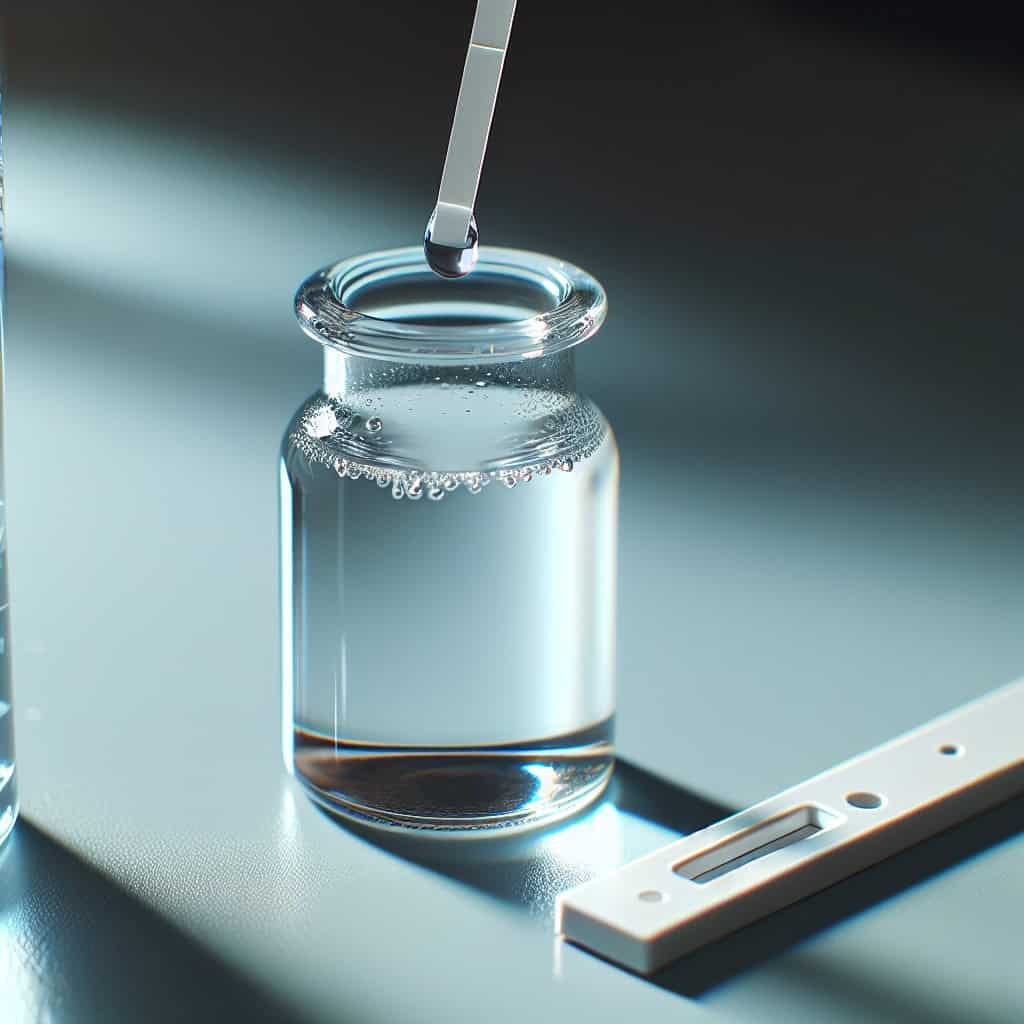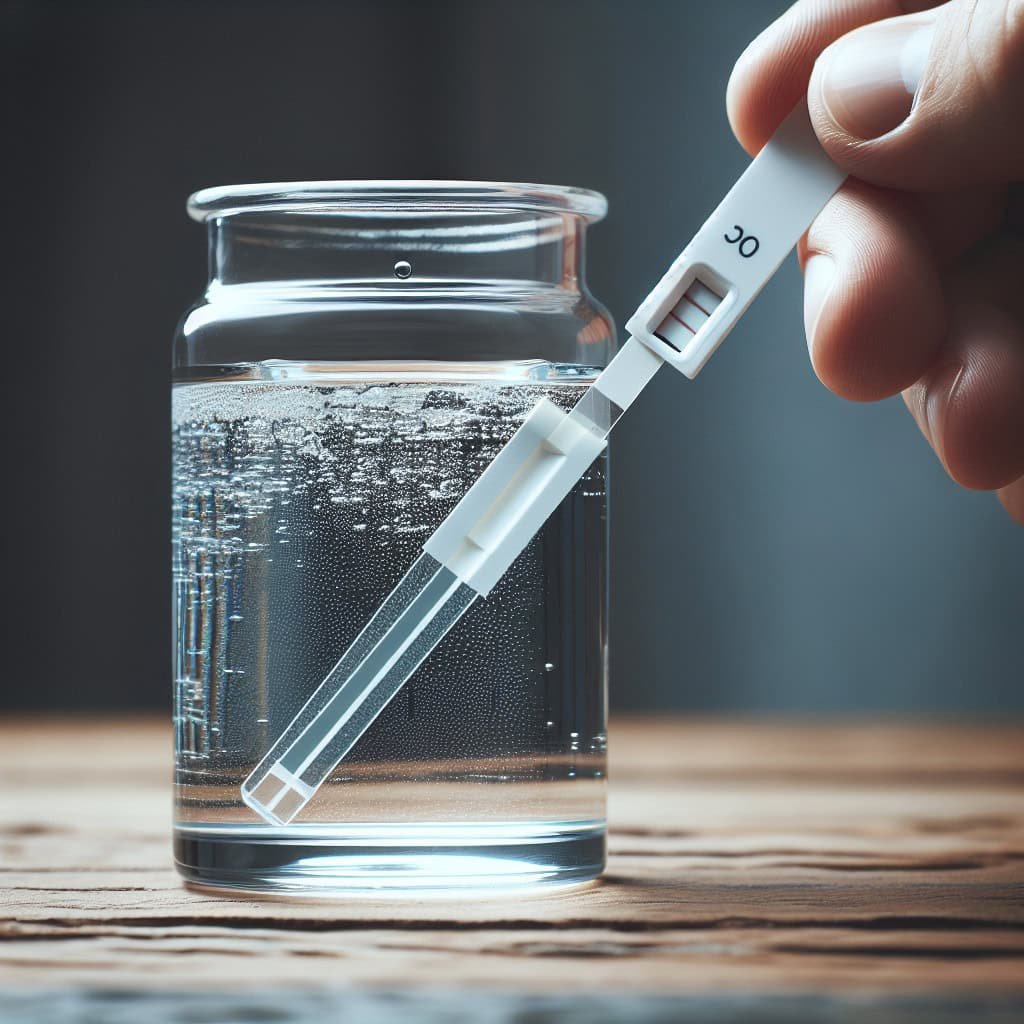Are you concerned about the potential contamination of your well water by manganese bacteria? Well, worry no more! In this article, we will explore effective measures that you can take to prevent the presence of manganese bacteria in your well water. By implementing these simple yet important steps, you will be able to ensure the safety and purity of your water supply, providing peace of mind for you and your loved ones. Let’s dive in and discover how you can safeguard your well water from manganese bacteria!
Understanding Manganese Bacteria
What is manganese bacteria?
Manganese bacteria, also known as manganese-oxidizing bacteria, are microorganisms that can be found in well water sources. These bacteria have the ability to oxidize manganese, a naturally occurring mineral, which can lead to contamination of well water.
How does manganese bacteria contaminate well water?
Manganese bacteria contaminate well water through a process known as microbial oxidation of manganese. This occurs when the bacteria oxidize the dissolved manganese in the water, causing it to form solid particles. These particles can then settle and accumulate in the well, water pipes, and plumbing fixtures, leading to the contamination of the well water.
Signs of well water contamination by manganese bacteria
There are several signs that indicate well water contamination by manganese bacteria. These signs may include:
Discoloration: Well water contaminated with manganese bacteria often appears brown or black in color, giving it a rusty or dirty appearance.
Metallic taste and odor: Manganese bacteria can produce compounds that give well water a metallic taste and unpleasant odor, resembling the smell of rotten eggs.
Staining: Manganese bacteria can cause reddish-brown or black stains on plumbing fixtures, sinks, and laundry. These stains can be difficult to remove.
Clogging and reduced water flow: As the solid particles formed by manganese bacteria accumulate in the well and pipes, they can cause clogging and reduce the water flow from faucets and other water outlets.
Testing and Monitoring Well Water
Why is testing well water important?
Testing well water for manganese bacteria is crucial for ensuring the safety and quality of your drinking water. Regular testing helps to identify if your well water is contaminated and to what extent, allowing for appropriate treatment measures to be taken. It also helps in monitoring the effectiveness of any existing treatment systems in place.
How often should well water be tested?
It is recommended to test well water for manganese bacteria at least once a year. However, certain circumstances may require more frequent testing. If you notice any signs of contamination or changes in the quality of your well water, such as discoloration or unpleasant odor, it is important to test it immediately.
Methods for testing well water for manganese bacteria
There are various methods available for testing well water for manganese bacteria. These include:
Laboratory testing: Sending a water sample to a certified laboratory for analysis is a commonly used method. The laboratory will conduct tests to detect the presence and concentration of manganese bacteria in the water.
Test kits: Test kits are available for purchase, which allow you to collect water samples and perform basic tests at home. These kits typically include reagents and instructions for conducting the tests.
Interpreting test results
When you receive the test results, it is important to understand how to interpret them. The results will indicate the concentration of manganese bacteria in your well water. If the concentration exceeds the recommended limits set by regulatory guidelines, it signifies contamination and the need for appropriate treatment measures.

Preventing Manganese Bacteria Contamination
Well construction and maintenance
Proper well construction and maintenance are essential in preventing manganese bacteria contamination. Follow these guidelines:
Location: Ensure that your well is located away from potential sources of contamination, such as septic systems, livestock areas, and chemical storage facilities.
Construction: Hire a professional well contractor who is experienced in constructing wells. They will ensure the well is properly sealed, has an appropriate casing, and a sanitary well cap.
Regular inspection: Periodically inspect your well for any signs of damage, corrosion, or entry points for external contamination.
Sealing and protecting the well
To prevent the entry of manganese bacteria into your well, it is important to seal and protect it properly. Take the following steps:
Well cap: Install a tight-fitting, vermin-proof well cap to prevent insects, rodents, and other animals from entering the well and introducing bacteria.
Sealing entry points: Seal any potential entry points, such as cracks or openings in the well casing, using appropriate sealing materials recommended by a professional.
Well cover: Use a durable and secure cover to safeguard the well from physical damage and unauthorized access.
Proper well disinfection
Disinfecting your well periodically helps to eliminate and prevent the growth of manganese bacteria. Follow these steps:
Consult a professional: Contact a well water expert or a water treatment specialist to guide you through the disinfection process.
Chlorination: Chlorination is commonly used to disinfect wells. It involves adding a calculated amount of chlorine to the well, allowing it to circulate, and then flushing the system to remove any residual chlorine.
Peroxide treatment: Hydrogen peroxide can also be used as an alternative disinfectant. Consult a professional to determine the appropriate concentration and method for its application.
Avoiding external contamination sources
To minimize the risk of manganese bacteria contamination, it is important to be cautious of potential external contamination sources. Take the following precautions:
Proper waste management: Ensure proper disposal and containment of waste, including chemicals, fertilizers, and livestock waste, to prevent them from seeping into the ground and contaminating the well water.
Regular inspections: Regularly inspect and maintain any potential sources of contamination, such as septic systems, plumbing connections, and irrigation systems.
Surface water control: Ensure proper drainage and management of surface water to prevent it from entering the well. Divert water away from the well area and properly manage runoff from nearby sources.
Water Treatment Options
Activated carbon filtration
Activated carbon filtration is an effective method for removing manganese bacteria from well water. The carbon filter adsorbs the bacteria and other contaminants, providing clean and safe drinking water. Regular maintenance and replacement of the carbon filter are necessary to ensure its effectiveness.
Iron and Manganese removal filters
Iron and manganese removal filters, such as greensand filters, can effectively remove both iron and manganese bacteria from well water. These filters use a special media that oxidizes and filters out the contaminants. Periodic backwashing and re-bedding of the filter media are required to maintain optimum performance.
Oxidation with chlorine or hydrogen peroxide
Oxidation with chlorine or hydrogen peroxide can be used to treat well water contaminated by manganese bacteria. This process involves adding a calculated amount of chlorine or hydrogen peroxide to the water, which reacts with the bacteria, oxidizing them and rendering them inactive. It is advisable to consult a water treatment specialist to determine the appropriate dosage and method for oxidation.
UV disinfection
Ultraviolet (UV) disinfection is a chemical-free method for removing manganese bacteria from well water. UV light is used to destroy the genetic material of the bacteria, rendering them unable to reproduce and causing their inactivation. Regular maintenance and monitoring of the UV disinfection system are necessary to ensure its effectiveness.
Reverse osmosis
Reverse osmosis (RO) is a highly effective water treatment method that can remove manganese bacteria from well water. The RO system uses a semipermeable membrane to filter out contaminants, including bacteria, leaving you with clean and safe drinking water. It is important to regularly maintain and replace the filters and membranes in the RO system to ensure its efficiency.

Regular Maintenance and Flushing
Cleaning and disinfecting water storage tanks
Regularly cleaning and disinfecting water storage tanks is essential for maintaining well water quality and preventing contamination. Follow these steps:
Empty the tank: Begin by completely draining the water storage tank, ensuring that it is completely emptied.
Cleaning process: Use a cleaning solution recommended by a professional and scrub the interior surfaces of the tank. Pay special attention to corners and hard-to-reach areas.
Disinfection: After cleaning, disinfect the tank by applying a chlorine solution or using another appropriate disinfectant. Allow the disinfectant to circulate in the tank for a specific duration recommended by a professional.
Flushing: Finally, flush the tank thoroughly to remove any residual disinfectant and ensure all cleaning agents are eliminated.
Routine well maintenance
Routine maintenance of your well system is crucial for preventing manganese bacteria contamination. Consider the following:
Visual inspections: Regularly inspect the well for any signs of damage, leaks, or entry points for bacteria. Look for any changes in water quality or pressure.
Annual professional inspection: Engage a well water expert to conduct an annual inspection of your well system. They can assess the condition of the well, check for any potential issues, and recommend necessary maintenance measures.
Maintenance of equipment: Regularly maintain and service well equipment, including pumps, pressure tanks, and water treatment systems. Follow the manufacturer’s recommendations for maintenance and consult a professional if you require assistance.
Flushing the well system
Flushing the well system periodically helps to remove any sediment, debris, or bacteria that may have accumulated in the well and pipes. Follow these steps:
Consult a professional: Contact a well water expert or a water treatment specialist to guide you through the flushing process.
Flushing procedure: The professional will typically use a high-velocity pump and special equipment to flush the well system. This helps to dislodge and remove any accumulated contaminants, ensuring the well water remains clean and safe.
Educating the Household
Inform household members about manganese bacteria
Educating household members about manganese bacteria and the risks associated with its contamination is crucial for their understanding and cooperation. Explain the following:
Health risks: Manganese bacteria contamination can lead to potential health risks, including gastrointestinal issues and potential adverse effects on the nervous system. It is important to emphasize the importance of preventing contamination.
Signs of contamination: Educate household members about the signs of manganese bacteria contamination, such as discoloration, taste, odor, staining, and reduced water flow. Encourage them to promptly report any changes in the well water quality.
Safe practices to minimize contamination risks
To minimize the risk of manganese bacteria contamination, it is important to follow safe practices. Share the following guidelines:
Proper waste disposal: Dispose of waste, chemicals, and other potential contaminants in a responsible manner to prevent them from entering the ground and potentially contaminating the well water.
Regular cleaning: Maintain cleanliness and hygiene in the well and plumbing fixtures. Regularly clean and scrub sinks, showers, and other water outlets to minimize the accumulation of bacteria.
Water conservation: Encourage household members to practice water conservation measures to minimize the amount of water that passes through the well system. This helps to reduce the risk of bacteria accumulation.
Regularly communicate well water test results
Maintaining open communication about well water test results is important for the awareness and understanding of household members. Share the test results with everyone and discuss any necessary actions or precautions that need to be taken. Regular communication ensures that everyone is actively involved in maintaining the safety and quality of the well water.

Seeking Professional Assistance
Hiring a well water expert
If you require professional guidance and assistance for well water management, consider hiring a well water expert. Well water experts are knowledgeable in well construction, maintenance, testing, and treatment. They can provide personalized recommendations and solutions based on your specific situation and needs.
Engaging a water treatment specialist
A water treatment specialist can help you assess and determine the best treatment options for manganese bacteria contamination. They are trained in water treatment technologies and can guide you through the selection, installation, and maintenance of appropriate treatment systems.
Consulting health departments or authorities
If you have concerns about the health risks associated with manganese bacteria contamination, consider consulting health departments or authorities. They can provide information, guidance, and resources related to water safety and health regulations. Their expertise can help ensure compliance with legal requirements and promote the well-being of your household.
Alternative Water Sources
Consideration of alternative water sources
If you continually experience severe manganese bacteria contamination in your well water or if treatment measures are ineffective, it may be necessary to consider alternative water sources. Explore the following options:
Public water supply: Consider connecting to a public water supply system if it is available in your area. Public water supplies are regulated and monitored to ensure safe drinking water.
Rainwater harvesting: Install a rainwater harvesting system to collect and store rainwater for non-potable uses, such as gardening, laundry, and toilet flushing. Ensure proper filtration and treatment if you intend to use harvested rainwater for drinking purposes.
Options for accessing safe drinking water
When alternative water sources are not feasible, there are other options to access safe drinking water:
Bottled water: Purchase bottled water from a reputable source to ensure its safety and quality. Look for bottled water that has been certified and meets regulatory standards.
Water delivery services: Consider using water delivery services that provide safe drinking water in large containers or water dispensers. These services ensure convenient access to clean water for drinking and cooking purposes.

Regulatory Guidelines and Standards
Understanding water quality standards
Understanding water quality standards is essential for ensuring the safety and quality of your well water. Regulatory agencies set guidelines and maximum contaminant levels for various substances, including manganese bacteria. Familiarize yourself with these standards and ensure compliance to safeguard your health and maintain water quality.
Compliance with health and safety regulations
Compliance with health and safety regulations is crucial when addressing manganese bacteria contamination. Follow any guidelines and regulations established by local health departments, authorities, or regulatory agencies. Regular testing, treatment, and maintenance of your well water system help ensure compliance and promote the well-being of your household.
Conclusion
Taking proactive measures for well water safety, particularly when it comes to manganese bacteria contamination, is essential in maintaining the quality and integrity of your drinking water. Understanding the nature of manganese bacteria, regularly testing and monitoring your well water, implementing preventive measures, exploring water treatment options, maintaining your well system, educating household members, seeking professional assistance when needed, considering alternative water sources, adhering to regulatory guidelines, and engaging in continuous monitoring and maintenance are all vital steps in safeguarding the health and well-being of your household. By prioritizing well water safety, you can enjoy clean and safe drinking water for years to come.


